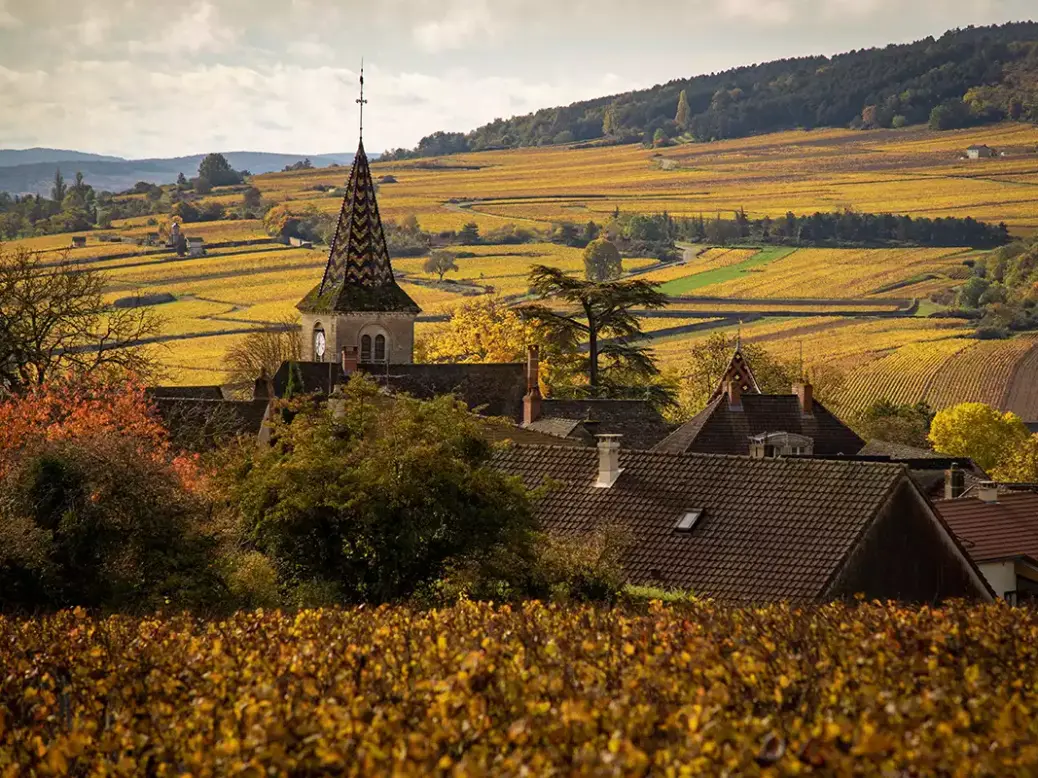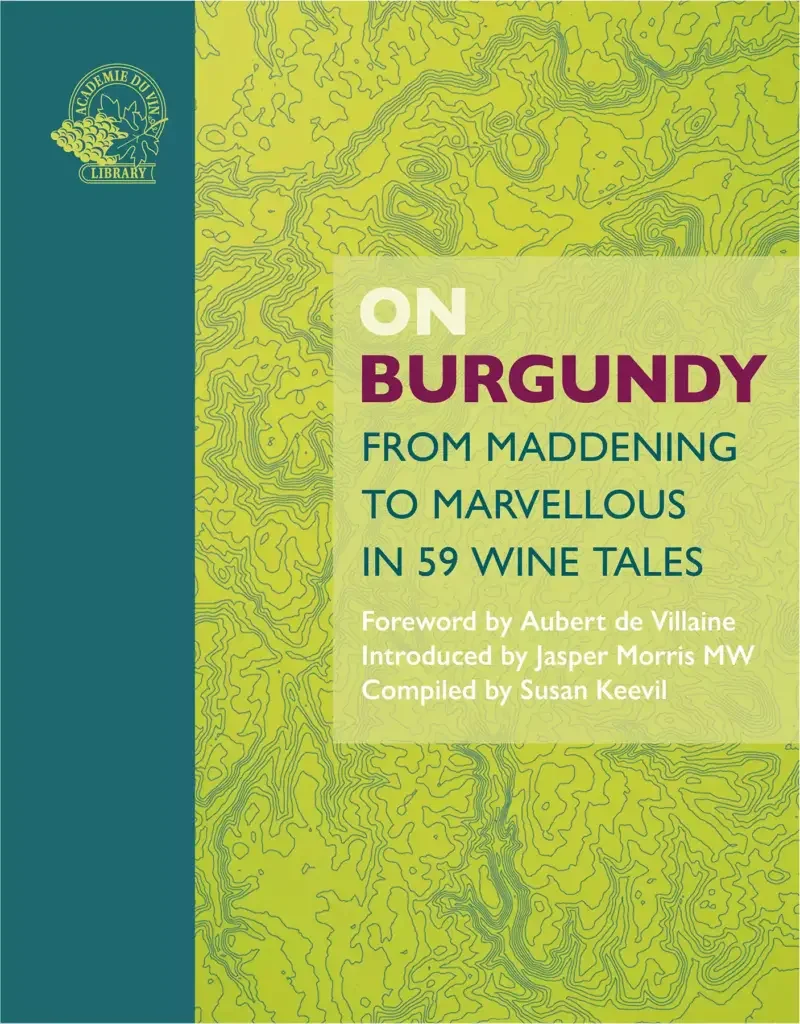
Brian St-Pierre reviews On Burgundy: From Maddening to Marvellous in 59 Wine Tales, edited by Susan Keevil.
Way back when, once upon a time in San Francisco, as we began a large, expensive, and sold-out tasting of red Burgundies, Clive Coates MW—author, bon vivant, and amiable provocateur—got to work with a question: How many in the audience would rate anything about it as their best wine experience? About three quarters of the audience, mostly serious collectors, raised their hands. Then he asked another: How many would rate anything about it as their worst? Again, though a bit more slowly, about three quarters of the audience raised their hands. I was puzzled by the math and the overlap, but he smiled cheerfully, contented. “That’s Burgundy—welcome to the neighborhood,” he said. “That overlap is always a high-traffic zone.” Indeed, and today even more so.
As Domaine de la Romanée-Conti’s Aubert de Villaine wryly notes in a foreword, there are 1,247 terroirs in the patchwork of “this blessed ribbon of land,” and probably an equal number of writers who have explored and attempted to explain it (so far, at least—many more are surely on the way). Several new traditions of this sometimes revered, sometimes reviled ancient territory are also explored and explained in the pages that follow, a past-and-present collection that perfectly suits its subject, though mostly appreciatively, offering a lower range of contentious overlap.
Jay McInerney begins truly, madly, deeply (for some of us only slightly over the top), admitting that he “doesn’t mind risking disappointment, heartbreak, and rejection in the pursuit of bliss, which is to say I’m a Burgundy lover […] a wine for lovers, lunatics, and poets […] the final stop on a pilgrimage of hedonism.” He frames the “Why Burgundy?” conversation in a comparison with Bordeaux that’s partly metaphorical and amusingly fair, and then revels, as most Burgundy lovers do, in the specific wine that created his original moment of rapture, like a romantic remembering his or her first kiss without blush or hesitation, easily invoking its “glorious transport.”
And so we’re away, taking off on a make-believe balloon flight with Hugh Johnson at the helm, setting the scene imaginatively and precisely, beginning to reveal some secrets in the contours of the slopes and the villages that anchor arcs of beguiling flavors, a rumpled vinous carpet that comes down to earth and settles straightforwardly in Jasper Morris MW’s essay on drystone walls, notions of minerality, and the surprising extra expressions provided by blunt, rustic nomenclature. Then, inevitable in the place that invented the idea of terroir, Allen Meadows, Remington Norman, and Alex Maltman dig the dirt a bit deeper, with some surprising results. (Romantics beware!)
A rich and varied harvest

Some anthologies preserve, some embalm; this one’s exuberantly alive, a divergent parliament, a busy talking place with no whispers, encompassing Attila the Hun, Charlemagne and the consequences of his Pinot Noir-stained beard, numerous saints, the grisly spectacle of Napoleon watering his Chambertin, what Hugh Johnson calls “the Godforsaken Sixties” and their financial stresses, the curse of oak in the 1980s and ’90s (“We all messed up,” admits Jasper Morris), the effects of the attentions of Robert Parker and Rudy Kurniawan, the threats of climate dislocation ahead, and the possible imminent responses. There’s also at least one note that may amuse longtime observers: The newer generation of vignerons visit each other’s cellars and taste each other’s wines in an open-minded way that earlier generations, clinging to the gnarled and hallowed notion of “otherness” didn’t, even when they intermarried, which was often. (Not all those hyphenates of various domaines are regional.)
Happily, there are also a number of cheerful glimpses of the current reweaving of the tangled filaments of tradition by an enterprising younger generation of vignerons. Elaine Chukan Brown tells the surprising tale of Les Aligoteurs, a group of almost 50 domaines persisting with that sibling of Chardonnay. (They have the same parentage, it seems, arrived at by different matchmakers.) Once well regarded, Aligoté was pushed aside by its more assertive and consistent relative but is now making a small comeback with warmer weather, which would have pleased the legendary sommelier Gerard Basset OBE MS MW, who featured it on all his wine lists, happy to champion it and introduce as many of us as possible to it. Adding some more structure and complexity to this mix, Anne Krebiehl MW provides as clear and sensible an introduction to cracking the codes of cloning in “the curious pas de deux between farmer and nature” as you’ll ever encounter, and Sarah Marsh MW plows deeply into tillage, which seems to be another unending—but surprisingly interesting—subject in search of a consensus.
There’s humor here, too, though mostly in flashes, like summer lightning. I miss Hilaire Belloc, “the bard of Burgundy,” and his heroic (and otherwise) poems and the usual abundance of dry quips from Maurice Healy; but Californian Randall Grahm, the original Rhône Ranger, reliably combines common sense with easygoing wit as he reveals that he can’t resist growing a bit of Pinot Noir, an act of “financial madness” he likens to a dog forever chasing cars he’ll never catch, but what he concedes is a necessary try for potential transcendence that might define Burgundy’s “primal tastes, without the mediation of language and analysis.”
Then there’s the Church, Burgundy’s extra dimension. Religion is present almost everywhere in the world of wine, but there it’s been magnified, as pervasive as limestone and mustard, as enduring as coq au vin and feast days, and with its ancient tales of monks as selfless vignerons, another sort of stew, of facts and fictions still simmering. Bart van Loo cites the expansionism of the Benedictines, “one of the first multinationals in history,” as the Catholic Church became governed nearly as much from Burgundy as from Rome, and the ambitions of the Cistercians, who built great cathedrals and improved the winemaking, as an example of the tensions that still give Burgundy hounds those speedy sedans to continually pursue. Meanwhile, Margaret Rand reminds us that many of those feast days and song-filled dinners may be meant to offset the fear of the Ice Saints who haunt the vineyards in the spring, named but impossible to shame into oblivion. (In Burgundy, more than any other wine region, it seems there’s always a back story.)
Every cook knows and cherishes the abundance of Burgundy, and this collection is a splendid, companionable reflection of that wine-drenched bounty: Eric Asimov and Fiona Morrison MW reflect on the gregarious seriousness of Becky Wasserman and Anne-Claude Leflaive; Anthony Hanson MW and Kermit Lynch go shopping (no easy task here); Raymond Blake and Stephen Brook present some princes, peasants, and pioneers; Gerald Asher effortlessly climbs the “magic mountain” of Corton; while Matt Kramer, as always, makes sense. Andrew Jefford is here, as are Serena Sutcliffe MW, Evelyn Waugh, Steven Spurrier, Rex Pickett—still going Sideways—as Simon Loftus ransacks the celebrations of otherness in the past. Peeking out of this stellar thicket are also some very welcome new vine-pickers: The road goes on. Generously and thoroughly bound round by Hugh Johnson and Jasper Morris as genially knowledgeable overseers, it’s as good a harvest as you could wish for. As Michael Broadbent MW notes, Burgundy is a minefield that appeals to the heart. Amen. Pinot Noir may still be “the heartbreak grape,” and Chardonnay a bit travel-weary, but Burgundy still sets the standard for both. Amen, indeed.
And my first kiss? La Tâche 1959: As close to starting at the top as anything I’ve ever done—fateful, unforgettable bliss.
On Burgundy:
From Maddening
to Marvellous in
59 Wine Tales
Susan Keevil (ed)
Published by the Académie du Vin Library
280 pages; £30






